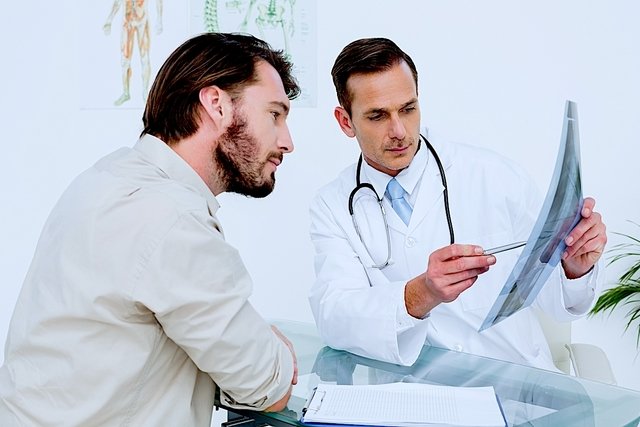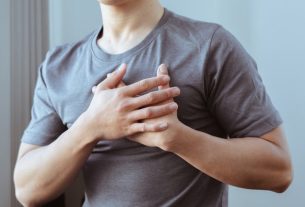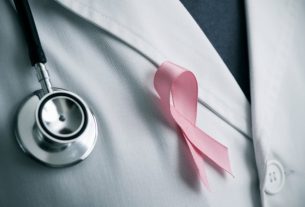Testicular atrophy occurs when one or both testicles are visibly reduced in size, which can happen mainly due to varicocele, which is a situation in which there is dilation of the testicular veins, and can also be a consequence of orchitis or a sexually transmitted infection. (IST).
For the diagnosis of this condition to be made, the urologist may recommend laboratory and imaging tests to identify what is causing the atrophy, and from there indicate the most appropriate treatment, which may include antibiotics, hormone replacement and even surgery in cases of torsion. or cancer, for example.

Possible causes
The main cause of testicular atrophy is varicocele, which is the dilation of the veins in the testicles, which leads to the accumulation of blood and the appearance of symptoms such as pain, a feeling of heaviness and the appearance of swelling in the area. Understand better what varicocele is and how to treat it.
Furthermore, it is also possible for atrophy to arise due to less common situations such as orchitis caused by mumps, torsion of the testicle due to accidents or blows, inflammation, STIs and even testicular cancer. In rare cases, due to the abuse of alcohol, drugs or the use of anabolic steroids, testicular atrophy is likely to occur, due to the hormonal changes that these substances cause in the body.
Main symptoms
The main symptom of testicular atrophy is the visible reduction in the size of one or both testicles, but other symptoms may be present, such as:
- Reduced libido;
- Decrease in muscle mass;
- Loss and reduction in body hair growth;
- Feeling of heaviness in the testicles;
- Testicles with altered consistency;
- Infertility.
When the cause of atrophy is inflammation, infection or torsion, symptoms such as pain, excessive sensitivity and nausea may be reported. Therefore, if testicular atrophy is suspected, a urologist should be consulted, as when not treated properly, this condition can lead to sterility and even loss of the organ.
How to confirm the diagnosis
To confirm what is causing the atrophy, the urologist can carry out an assessment of the testicles, observing their size, firmness and texture, in addition to asking questions in order to better investigate the possible causes.
In addition, laboratory tests such as a complete blood count may be indicated to identify a viral or bacterial infection, STI tests, testosterone measurement and imaging tests to check blood flow, whether there is a torsion, cyst or the possibility of testicular cancer.
How the treatment is carried out
Treatment for testicular atrophy must be indicated by the urologist according to the cause, and the use of medications that promote symptom relief and return the testicles to normal may be indicated. However, in some cases, surgical treatment may be necessary.
When testicular atrophy is caused by testicular cancer, surgery may also be indicated to remove the tumor, in addition to conventional chemotherapy and radiotherapy when necessary.
Furthermore, if it is found that testicular atrophy is a consequence of torsion in the testicle, it is important that surgery is performed as quickly as possible to avoid necrosis of the region and infertility.
Bibliography
- MED ARCH. Testicular Volume and Testicular Atrophy Index as Predictors of Functionality of Unilaterally Cryptorchid Testis. 2014 . Available at: <https://www.ncbi.nlm.nih.gov/pmc/articles/PMC4272499/>. Accessed on September 16, 2020
- EUR J PEDIATR SURG. Factors Predicting Testicular Atrophy after Testicular Salvage following Torsion. 2016. Available at: <https://pubmed.ncbi.nlm.nih.gov/26509312/>. Accessed on September 15, 2020
- J UROL .. Severe testicular atrophy does not affect the success of microdissection testicular sperm extraction. 2014. Available at: <https://pubmed.ncbi.nlm.nih.gov/23911635/>. Accessed on September 15, 2020
- EUR J PEDIATR. Primary and secondary testicular atrophy. 1987. Available at: <https://pubmed.ncbi.nlm.nih.gov/2891525/>. Accessed on September 16, 2020

Sign up for our newsletter and stay up to date with exclusive news
that can transform your routine!
Warning: Undefined array key "title" in /home/storelat/public_html/wp-content/plugins/link-whisper-premium/templates/frontend/related-posts.php on line 12
Warning: Undefined array key "title_tag" in /home/storelat/public_html/wp-content/plugins/link-whisper-premium/templates/frontend/related-posts.php on line 13



